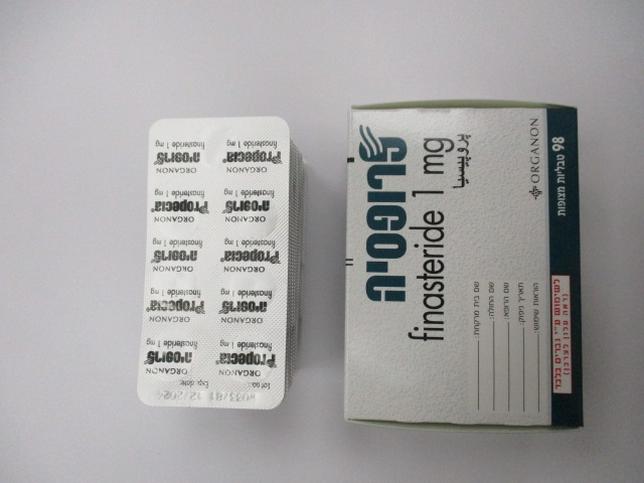Quest for the right Drug

פרופסיה PROPECIA (FINASTERIDE)
תרופה במרשם
תרופה בסל
נרקוטיקה
ציטוטוקסיקה
צורת מתן:
פומי : PER OS
צורת מינון:
טבליות מצופות פילם : FILM COATED TABLETS
עלון לרופא
מינוניםPosology התוויות
Indications תופעות לוואי
Adverse reactions התוויות נגד
Contraindications אינטראקציות
Interactions מינון יתר
Overdose הריון/הנקה
Pregnancy & Lactation אוכלוסיות מיוחדות
Special populations תכונות פרמקולוגיות
Pharmacological properties מידע רוקחי
Pharmaceutical particulars אזהרת שימוש
Special Warning עלון לרופא
Physicians Leaflet
Adverse reactions : תופעות לוואי
4.8 Undesirable effects The adverse reactions during clinical trials and/or post-marketing use are listed in the table below. Frequency of adverse reactions is determined as follows: Very Common (≥ 1/10); Common (≥ 1/100, < 1/10); Uncommon (≥ 1/1,000, < 1/100); Rare (≥1/10,000, < 1/1,000); Very rare (< 1/10,000); not known (cannot be estimated from the available data). The frequency of adverse reactions reported during post-marketing use cannot be determined as they are derived from spontaneous reports. Immune system Not known: Hypersensitivity reactions, including rash, disorders: pruritus, urticaria and angioedema (swelling of the lips, tongue, throat and face). Psychiatric disorders: Uncommon*: Decreased libido. Uncommon: Depression†. Not known: Anxiety, suicidal ideation. Cardiac disorder: Not known: Palpitation Hepatobiliary Not known: Increased hepatic enzymes. disorders: Reproductive system Uncommon*: Erectile dysfunction, ejaculation disorder and breast disorders: (including decreased volume of ejaculate). Not known: Breast tenderness and enlargement, testicular pain, haematospermia infertility**. **See section 4.4. * Incidences presented as difference from placebo in clinical studies at Month 12. † This adverse reaction was identified through post-marketing surveillance but the incidence in randomized controlled Phase III clinical trials (Protocols 087, 089, and 092) was not different between finasteride and placebo. Side effects, which usually have been mild, generally have not required discontinuation of therapy. Finasteride for male pattern hair loss has been evaluated for safety in clinical studies involving more than 3,200 men. In three 12-month, placebo-controlled, double-blind, multicentre studies of comparable design, the overall safety profiles of PROPECIA and placebo were similar. Discontinuation of therapy due to any clinical adverse experience occurred in 1.7% of 945 men treated with ‘Propecia’ and 2.1% of 934 men treated with placebo. In these studies, the following drug-related adverse experiences were reported in >1% of men treated with PROPECIA: decreased libido (PROPECIA, 1.8% vs. placebo, 1.3%) and erectile dysfunction (1.3%, 0.7%). In addition, decreased volume of ejaculate was reported in 0.8% of men treated with PROPECIA and 0.4% of men treated with placebo. Resolution of these side effects occurred in men who discontinued therapy with PROPECIA and in many who continued therapy. The effect of PROPECIA on ejaculate volume was measured in a separate study and was not different from that seen with placebo. By the fifth year of treatment with PROPECIA, the proportion of patients reporting each of the above side effects decreased to <0.3%. Finasteride has also been studied for prostate cancer risk reduction at 5 times the dosage recommended for male pattern hair loss. In a 7-year placebo-controlled trial that enrolled 18,882 healthy men, of whom 9060 had prostate needle biopsy data available for analysis, prostate cancer was detected in 803 (18.4%) men receiving finasteride 5 mg and 1147 (24.4%) men receiving placebo. In the finasteride 5 mg group, 280 (6.4%) men had prostate cancer with Gleason scores of 7-10 detected on needle biopsy vs. 237 (5.1%) men in placebo group. Of the total cases of prostate cancer diagnosed in this study, approximately 98% were classified as intracapsular (stage T1 or T2). The relationship between long-term use of finasteride 5 mg and tumours with Gleason scores of 7-10 is unknown. In addition, the following have been reported in post-marketing use: persistence of sexual dysfunction (decreased libido, erectile dysfunction and ejaculation disorder) after discontinuation of treatment with PROPECIA; male breast cancer (see 4.4 Special warnings and precautions for use). Drug-related sexual undesirable effects were more common in the finasteride 1 mg- treated men than the placebo-treated men, with frequencies during the first 12 months of 3.8% vs 2.1%, respectively. The incidence of these effects decreased to 0.6% in finasteride 1 mg-treated men over the following four years. Approximately 1% of men in each treatment group discontinued due to drug related sexual adverse experiences in the first 12 months, and the incidence declined thereafter. Reporting of suspected adverse reactions Reporting suspected adverse reactions after authorisation of the medicinal product is important. It allows continued monitoring of the benefit/risk balance of the medicinal product. Any suspected adverse events should be reported to the Ministry of Health according to the National Regulation by using an online form: https://sideeffects.health.gov.il

מסגרת הכללה בסל
התוויות הכלולות במסגרת הסל
| התוויה | תאריך הכללה | תחום קליני | Class Effect | מצב מחלה |
|---|---|---|---|---|
| לטיפול בהגדלה שפירה של הערמונית. | אורולוגיה | DUTASTERIDE, FINASTERIDE | BPH |
שימוש לפי פנקס קופ''ח כללית 1994
לא צוין
תאריך הכללה מקורי בסל
לא צוין
הגבלות
לא צוין
מידע נוסף
עלון מידע לצרכן
12.01.21 - עלון לצרכן אנגלית 12.01.21 - עלון לצרכן עברית 12.01.21 - עלון לצרכן ערבית 09.03.24 - עלון לצרכן עברית 03.04.24 - עלון לצרכן אנגלית 03.04.24 - עלון לצרכן ערבית 24.06.12 - החמרה לעלון 26.05.13 - החמרה לעלון 07.04.14 - החמרה לעלון 19.08.20 - החמרה לעלון 20.03.24 - החמרה לעלוןלתרופה במאגר משרד הבריאות
פרופסיה